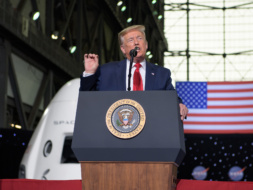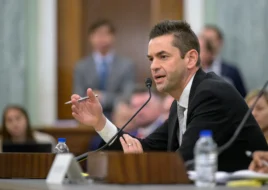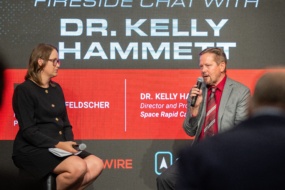Officials from 11 industry organizations are urging the FCC to rethink spectrum limits for LEO satellites, which were imposed more than two decades ago in an effort to protect sats in geostationary orbit.
In a letter sent to FCC Chair Brendan Carr on Monday, the writers said lifting equivalent power-flux density (EPFD) limits on non-geostationary sats would benefit both consumers and the industry.
Context: Limits on EPFD cap the strength of radio signals from sats in LEO, with an aim to protect satellites in geostationary orbit and enable spectrum sharing. Companies building out megaconstellations in LEO, including SpaceX and Amazon, have pushed for the rules to be reconsidered. Legacy geostationary operators, however, support the existing regs, arguing that they haven’t prohibited the rise of a LEO economy.
The FCC announced in April that they were reviewing the rules. However, on a global level, a review of regulations is not on the agenda for the International Telecommunication Union’s next World Radiocommunication Conference in 2027.
Make the case: The letter lays out three reasons why the FCC should revise these limits:
- It will help rural communities—who rely on LEO sats for internet access—as well as first responders, who turn to these sats for connectivity during natural disasters or other crises.
- It will increase competition in the LEO satellite industry, by lowering the barrier to entry for new players to offer better services with fewer sats and launches.
- It will allow the US satellite industry to remain competitive globally, by ensuring that advanced tech is not limited by regulations.
“We urge the commission to move forward with updating the EPFD limits and to champion this reform internationally and at the ITU, to unlock the full potential of LEO satellites both domestically and abroad,” the letter reads. “Americans would greatly benefit from greater access to LEO broadband, increased competition, lower prices, and improved service quality.”
Signatories: The letter was signed by 14 individuals from 11 organizations, including the Open Technology Institute at New America, the Lexington Institute, the Software & Information Industry Association and the Computer & Communications Industry Association.




